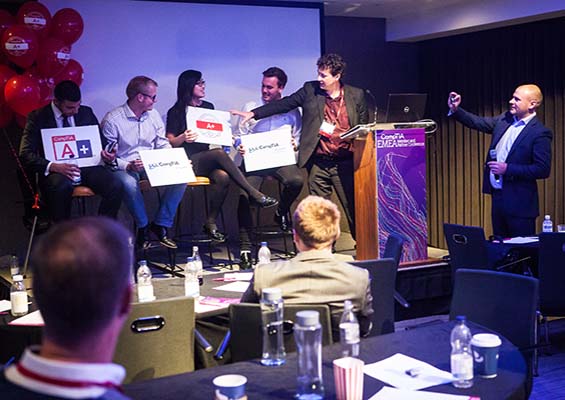
Computers from the ’90s might as well be ancient artifacts. These relics of the past are likely best suited for museum showcases, but for those who earned early editions of the CompTIA A+ certification, they were critical stepping stones to career growth. With the launch of the new CompTIA A+ (core series), this entry-level IT certification continues to serve as the gateway to a rewarding career in tech, much as it did more than 20 years ago. CompTIA brought together four people who have earned CompTIA A+ over the years to compare what it was like then to what it’s like now.
CompTIA A+ as an Entry to IT
Launched in 1993, A+ was CompTIA’s first certification exam. The offering began as a way to standardize skills for PC technicians in a manner that showed they could work on any machine, not just a specific manufacturer’s configuration. Today, employers demand CompTIA A+ certification as a way to validate skills and understand an applicant can perform the role from day one.
Chris Hodson, a chief information security officer (CISO), data protection officer and Institute of Information Security Professionals (IISP) board member, said that for as much as technology has changed since he earned his CompTIA A+ certification in 2002, the exam continues to open doors.
“For all the changes, the principles are very much what they used to be,” Hodson said. “It’s as relevant today as it was back then.”
Fellow panelist Lianne Vuong echoed this sentiment. The IT support technician for Beaufort Underwriting Agency Ltd credits CompTIA A+ for beginning a rewarding career.
“I was 16 and passed my A+,” she said. “It was the stepping stone to the career I have today.”
Nazir Hanif has moved into project management for Barclays since earning his CompTIA A+ in 2012 and said the exam gives him an edge even today.
“I can get into the lower-level details with the people doing provisioning and understand what they’re doing,” Hanif said. “It is a stepping stone into the technology world, and it broadens your horizons to know what different types of technology are involved.”
Why Employers Value CompTIA A+
Beyond setting up careers for success, CompTIA A+ is a great tool for technicians as they move into management roles. Thomas Wales, the head of customer services for EMEA at OVH, says it helps him pick the right candidates for the job.
“If that’s on the CV, it’s kind of like ‘we can work with this person.’ I know that they’re willing to learn … and they will understand the base concepts,” Wales said.
It’s a true time saver for building a brilliant team, Hodson echoed.
“It saves me 45 minutes in grilling you,” he said.
 Hanif said the leg up in the hiring process is just the beginning to CompTIA A+ benefits.
Hanif said the leg up in the hiring process is just the beginning to CompTIA A+ benefits.
“I actually carry around all of my CompTIA [certification] cards,” Hanif said. “There’s always that thing in the back of your head that you are a certified professional, and it gives you some confidence.”
Vuong said the confidence from earning CompTIA A+ started paying off in her first interview when she was asked to assemble a computer.
“I remembered back on the 901, that was on the exam,” she said. “I did it, and my bosses were impressed.”
Hanif said the problem-solving skills required to master CompTIA A+ don’t fade, even as his job roles have changed.
“It’s a factor that differentiates you. I got the cert at 16, and I still kick into troubleshooting mode,” Hanif said. “It becomes part of your natural character.”
How Preparing for CompTIA A+ Has Changed … and Stayed the Same
Hanif said in the days of yesteryear before online study options, like the CompTIA CertMaster suite of products, test takers had to practice hands-on skills in person or study the old-fashioned way.
“I remember carrying around this massive CompTIA book,” Hanif said. “It was so big. I used to go on a one-hour-15-minute journey to where I worked and to the training center, and people would look at me.”
Each panelist shared their unique manner of studying for the exam, ranging from flashcard quizzes to explaining it to others.
“I would just highlight everything, write it down, speak about it and take notes,” Vuong said.
While Hudson said practice exams and relearning what you didn’t get right the first time are crucial, there’s no quick fix for last-minute jitters.
“Being nervous is innately associated with something you care about,” Hudson said. “As long as you’re prepared, you’ll do the job. You put the hours in, and you’ll get the results out.”
Read more about the new CompTIA A+ core series or download the exam objectives to get started.

